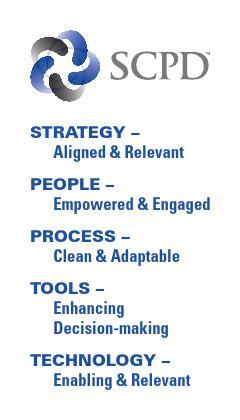
Used with permission of SCPD
Having spoken at the 2014 Society of Concurrent Product Development conference, I was looking forward to the 2015 session. I’m pleased to say it didn’t disappoint. They had 76 attendees at the 3M Innovation Center in Minneapolis, MN (always a great venue), from as far away as Germany.
The SCPD as an organization focuses on corporations for the purpose of improving concurrency and teamwork. The theme of the 2015 SCPD conference was optimizing time to market. Presentations made by leaders of firms as large as 3M and as small as SOMA, plus an amazing panel session around 3D printing, left us all with great insights.
I came away from the conference once again energized to see firms taking on value creation with innovative tools and techniques. Having taken pages of notes, I’ll highlight five practical areas you can apply to your firm with good results.
#1. Having no tolerance for delay in forming your value proposition
SOMA CEO Mike Del Ponte shared a technique he called “home team, away team” they use to rapidly converge on a design that takes advantage of the best insights of the firm and potential consumers. When in product concept design mode, they have a “command center” with multiple screens up at their corporate headquarters. Meanwhile, upwards of 10 teams are sent into the field with iPads to locations like shopping malls, coffee shops and other venues where their target consumers are located. Real-time renderings are sent to the field teams who immediately solicit feedback and call in on five-minute rotating schedules. The feedback is posted immediately on a monitor in the headquarters and a new rendering is completed and pushed out. This sense of urgency collapses what might have taken weeks to a day.
Action point: Develop plans to bring you customer into the design loop real time.
#2. Using constraints to drive creativity
SOMA drives hard to rapidly close the product cycle, and one example was their aggressiveness in gathering field data. Building on the Toyota concept of “go and see,” they quickly made foam prototypes of their pitchers and took them everywhere. They tried them at Home Depot in every fridge and took them to as many sinks as possible to make sure they fit under the faucets. They also had as many people as possible handle the prototypes to make sure hand sizes and usage conventions were both addressed. If they needed information that was best gained face to face, they hopped on a plane and had the meeting.
Action Point: Make sure you understand the time value of being in the market earlier, and err on the side of action in cutting out cycle time.
#3. Careful use of Stealth versus Visible innovation in mid-sized larger firms
Under the heading of empowerment, a rich discussion was held around the idea that the middle management team needs to develop the skill of maturing innovation “under the radar” to allow it to come to a sufficient level of maturity before teeing it up for senior management. Some large firms such as 3M, General Mills and Google have policies for discretionary inventing, but it was interesting to hear several mid-sized firms that used this as well without a firm policy in place.
Action point: With the understanding that it takes some time to get a concept ready for prime time, make it clear that it’s ok to work on innovation in your firm with some guardrails of time and investment.
#4. Approaching politics in organizations as a tool and not a tragedy
Many times you’ll hear veiled references to innovation programs not getting done due to politics not allowing them to move forward. The best growth leaders understand that wherever you have groups of humans accountable for resources and results, there will be power structures established – and they will be resistant to change. Working within (and when necessary outside) power structures is not impossible, but takes some time to understand the influencers, their viewpoint and decision styles. Skillful homework, just as you would on a technical issue, will usually result in a way to move forward.
Action point: Do a politics force field analysis as a key part of the implementation plan, and do the work to build support over the arc of the program.
#5. Merging traffic – discussing how to align the speed of innovation with the speed of adoption
In his presentation on innovation in US Bank, CINO Dominic Venturo brought to light the key issues of the gap between validated innovation and adoption. While not offering a straightforward solution, it provided fodder for some great dialogue.
Think about two conveyor belts, one moving faster than the other. In this case, innovation development and validation moves faster than the implementation team can complete adoption. There are only a few ways to resolve this – put things on the shelf (an innovation buffer), speed up the installation team, find new ways to use them outside the core team they were designed for or slow down the innovation development process. This is a problem in many mid-sized and larger firms, and needs to be carefully considered to make sure that the shareholders are getting the optimum benefit.
Action point: Take the enterprise view when optimizing your innovation systems and understand that shareholders only benefit from innovation concepts that are installed in the business. (and to build on the concurrent theme, have team members on the innovation team from the “landing zone”)
SCPD continues to be one of those conferences that points the way to some interesting new concepts and ideas. If you are looking for something new and fresh, I suggest you check it out in 2016.
With summer fast approaching, this can be a great time to take steps to move from concepts to action within your own organization. If you’d like to work together, I do have a couple of slots available, which I reserve for private, executive coaching relationships with C-level leaders and subject matter experts. If you’d like to learn more about how I can help you guide your organization to clarity, action and growth, please schedule a 20-minute introductory session.


